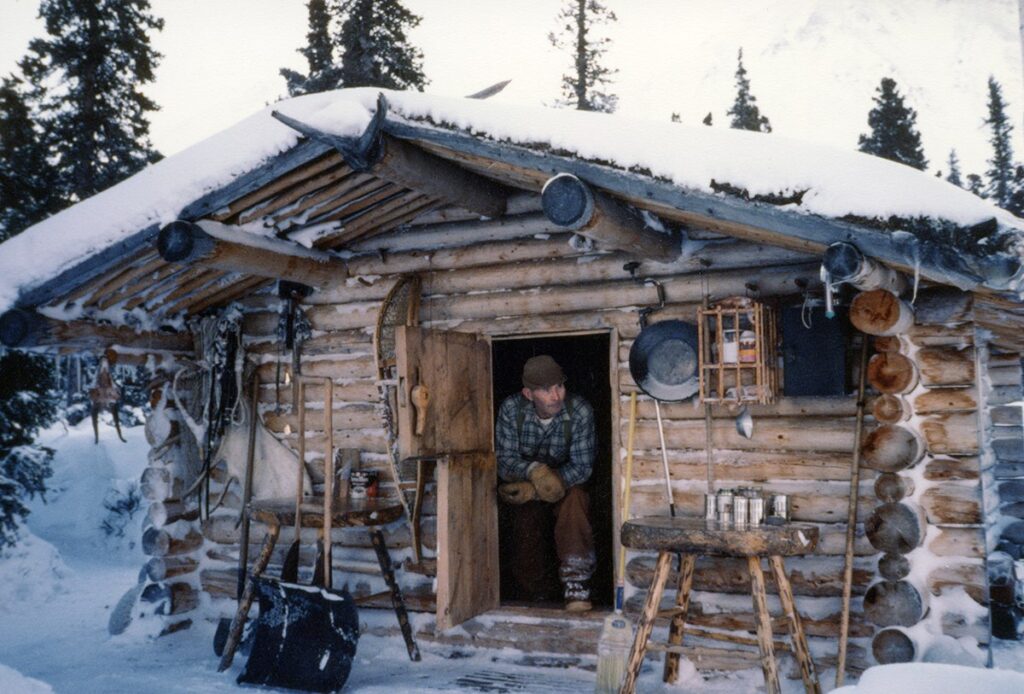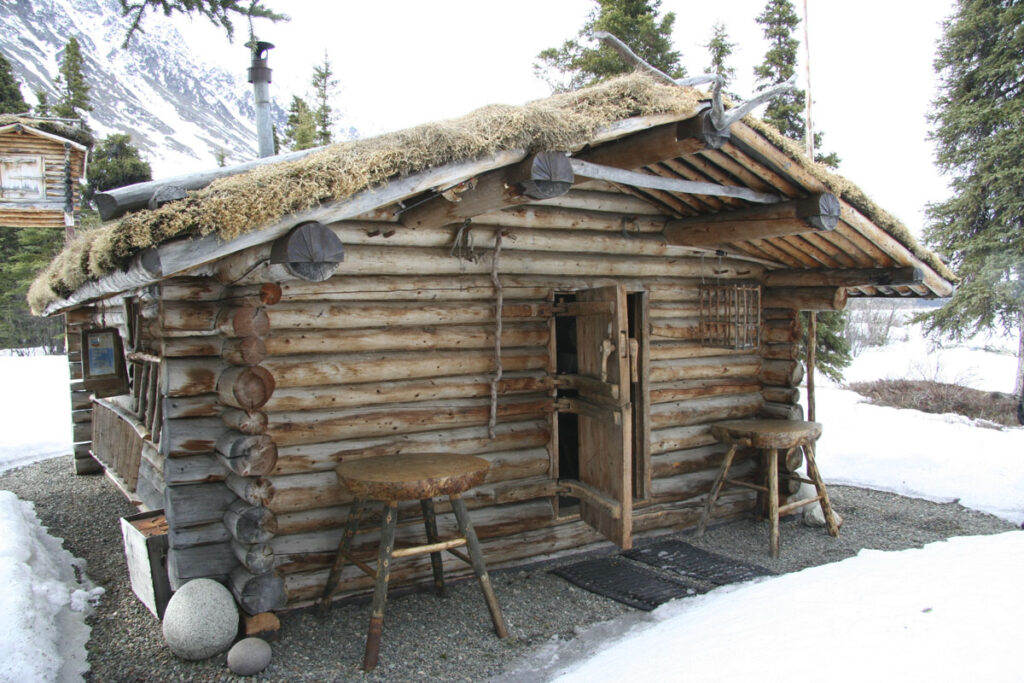There are two kinds of lifestyles that people prefer. One style of living is in or around a city, going to work in a big building, and interacting with hundreds of people per day. The streets are filled with cars to the point where a three-mile ride downtown can sometimes take three hours.
Then there’s the other kind of life that people like, living in the country with open space and not much around you. If you’ve ever been through Texas, you’ve seen the small towns with just a few thousand people in it where everyone knows your name. Traffic is not much of a concern, and
But there’s a third kind of life that is almost unheard of. That’s the life of Dick Proenneke. It’s about as simple a life as you can get.
Proenneke made his own living in the Alaska wilderness. He lived alone–truly alone–for 30 years. He built a cabin with his own hands and lived like they did before electricity was ever invented. He created heat by simply rubbing wood together and making fire He had no running water and went out and hunted to give himself a meal at night.
Cars? Dick didn’t need that at all. Phones? He never made a single call. Neighbors? He’d have to hike miles before he’d come across the person that was closest to him. Computer? Dick never touched one.
The best part was he documented it all. For 30 years, Proenneke lived this kind of life, taking pictures and writing about the experience. When he died in 2003, the stories began to be published. It was an incredible life story.

Early Life of Dick Proenneke
Dick Proenneke was born in Primrose, Iowa, in 1916. Much of what he learned growing up came from his father, who was a carpenter, painter, well-driller, and World War I veteran. Dick Proenneke, like his father, also served in the war, enlisting after the U.S. was bombed at Pearl Harbor in 1941. Like his father, Proenneke was a carpenter and served at Pearl Harbor for more than two years.
During the war, Proenneke visited San Francisco, awaiting his next assignment. While hiking in the California mountains, he was diagnosed with rheumatic fever, forcing him to be hospitalized for six months. He received a medical discharge right before the war ended in 1945.
The illness was a life-altering event for Pronneke, who nearly died in the hospital. Afterward, he told his friend he would devote the rest of his life to taking care of his body and health. He was sick and tired of being in a hospital room and feeling powerless and wanted to live outdoors where he could control his own life.
Following the war, he went to school and became a diesel mechanic. He gained a reputation as a tireless worker with a work ethic like no other. His love for the outdoors only grew with time.
Proenneke’s Move to the Great Northwest
Proenneke wanted to live more out in the open and developed a love of nature as his life went on. He moved to Oregon in the late 1940s, working at a sheep ranch. For a while, he had a desire to raise cattle and live in the country.
Then he took on a job as a heavy equipment operator and repairman in Kodiak, Alaska, on a Naval base. Proenneke loved Alaska because it wasn’t anything like city life; it was more open with plenty of wilderness, a nature lover’s dream.
Proenneke took on other jobs throughout Alaska, such as a diesel technician and salmon fisherman. He then got a job at King Salmon working for the Fish and Wildlife Service. He was extremely skilled and highly sought-after, and by the time he was 50, he had made enough money to retire and live happily.
Proenneke, though, suffered another health scare when a freak accident almost cost him vision. After two near battles with death, he decided it was time to look for an escape route. He was ready to retire and live the way he wanted to.
Some people decide to go to Florida for retirement. Others like to live abroad and travel. For Proenneke, all he wanted to do was build a log cabin in Twin Lakes, Alaska, and live by himself among nature. And that’s exactly what he did.
Alone in the Wilderness
When Proenneke first moved to Twin Lakes, which today is where Lake Clark National Park is located, he stayed at a cabin owned by a friend from the Navy. While he lived there, he set out to build his own cabin for himself.
He made a 12’x16’ building, made purely out of saddle-notched spruce logs, all cut and peeled with his own hands. He put spruce limbs to act as the roof and covered it with sod and moss. He found some stones and built a chimney so he could make a fire, and went to a nearby stream for gravel to construct a floor.

Proenneke didn’t have a phone, no electricity, no running water, or any stores around him to shop. His manual skills growing up helped him build things on his own and make fire when he had to in the frigid Alaska weather.
He went out in the wilderness almost daily, hunting and fishing for food. If he had to go somewhere of any importance, such as getting wood or tools, he didn’t drive; he went hiking.
Pronneke loved to write and would journal. More than 100 pounds of notebook paper was found with his writings on it after he had passed away. People learned what it was like to truly live on your own.
“What was I capable of that I didn’t know yet?” Proenneke wrote. “What about my limits? Could I truly enjoy my own company for an entire year? Was I equal to everything this wild land could throw at me? I had seen its moods in late spring, summer, and early fall, but what about winter? Would I love the isolation then, with its bone-stabbing cold, its brooding ghostly silence, its forced confinement? At age fifty-one I intended to find out.”
Proenneke didn’t plan to live here for 30 years. It was something to try out and see if it worked. Once he got used to this way of living, he loved it. He felt as free as anyone could ever feel. He never found lady love, but he never felt like he needed it. He was in his own kind of heaven.
“I looked around at the wind-blasted peaks and the swirls of mist moving past them,” he wrote. “It was hard to take my eyes away. I had been up on some of them, and I would be up there again. There was something different to see each time and something different from each one. All those streamlets to explore and all those tracks to follow through the glare of the high basins and over the saddles. Where did they lead? What was beyond? What stories were written in the snow?”
The Final Days
After living at Twin Lakes for 30 years, Pronneke’s health began deteriorating. Just after his 80th birthday in 1999, he decided he couldn’t live on his own anymore. He couldn’t do the kinds of things to survive like he had earlier. He packed up and moved to California and lived with his brother. He passed away a few years later in 2003.
The house Pronneke made and lived in was never forgotten, though. Neither were his stories. Alaska Geographic published The Early Years: The Journals of Richard L. Proenneke 1967-1793 and The Natural History Association published More Reading From One Man’s Wilderness, which included more journals from Proenneke. His log cabin is now a famous exhibit at Lake Clark National Park & Preserve.
If you ever visit Donnellson, Iowa, you’ll come across the Richard Pronneke Museum exhibit, where most of the pictures he took while living there are stored. They are also in Alaska at the national park.

